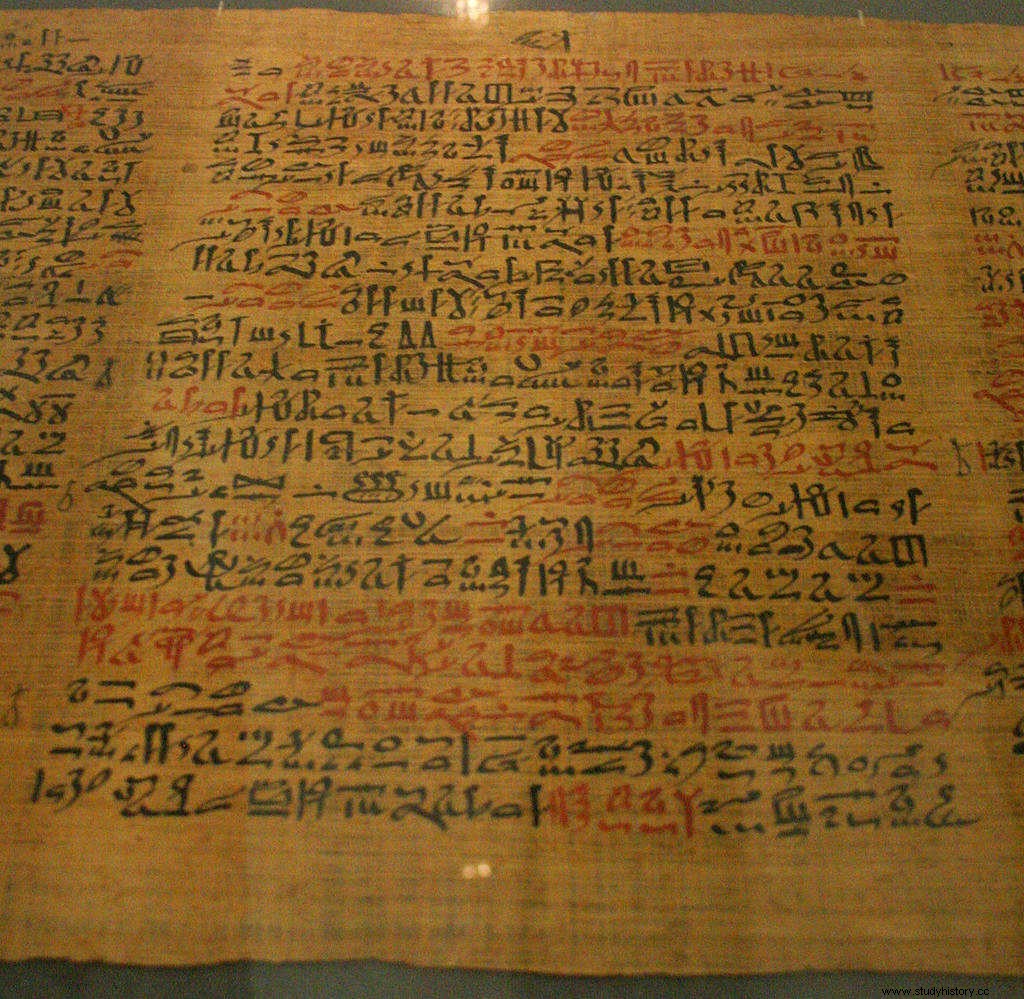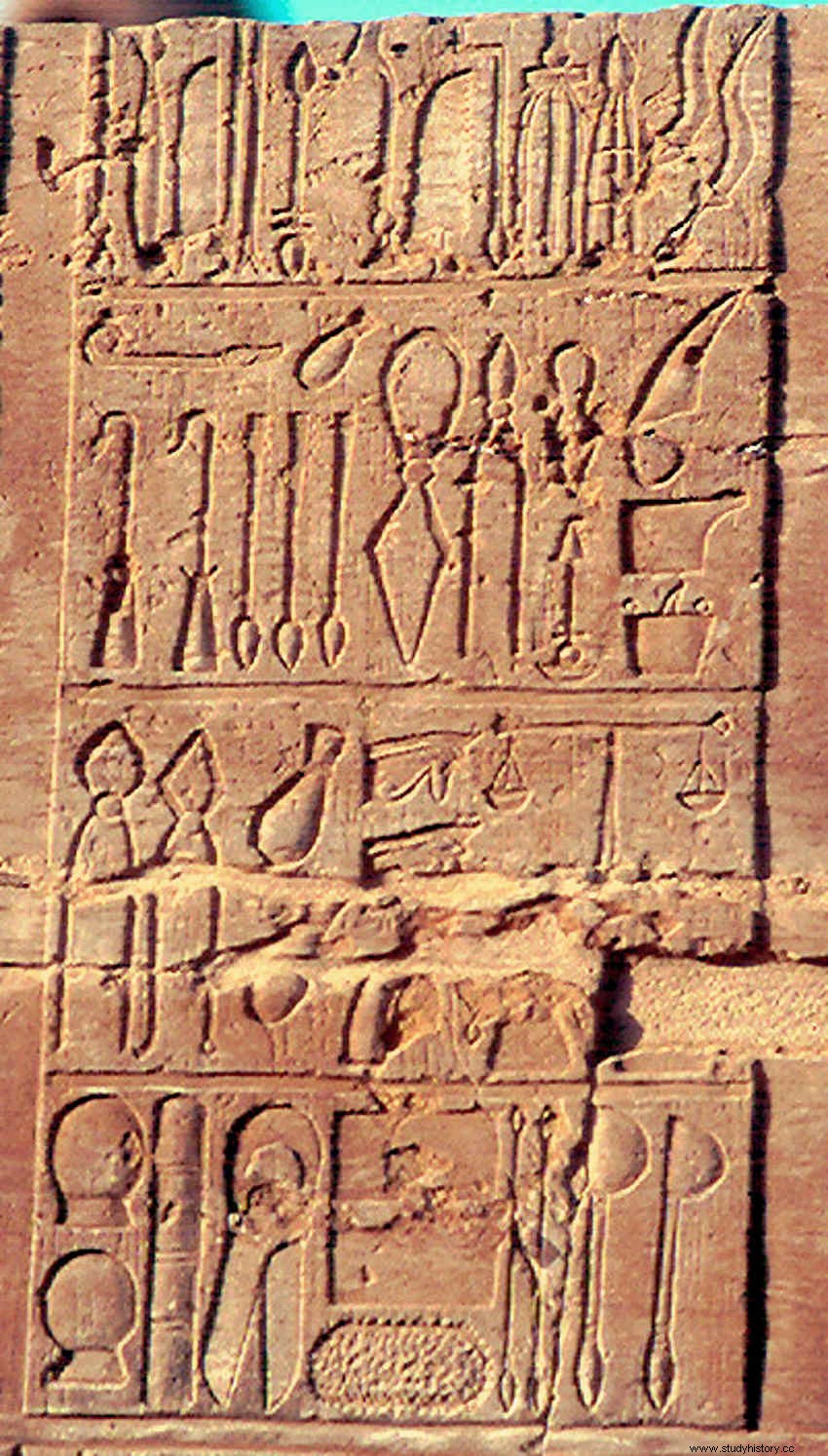Surely more than one reader will remember the novel (or its film version) Sinuhé the Egyptian , by Finnish Mika Waltari.
It tells the story of the pharaoh's doctor, his rise and fall because of a femme fatale, his travels through neighboring worlds and his final involvement in the monotheistic revolution that Akhenaten carried out and that ended the overthrow of him. For many, however, the most interesting thing is the learning process that Sinuhé carries out in the House of Life , the school where the profession was taught for ten years.

The House of Life was reserved for priests and scribes because, after all, they were the ones who knew how to read and write. It is believed that there was a branch of this institution in each city and the students had an important collection of documentary collections on papyrus for study. Some of them have managed to survive the passage of millennia and today they are authentic treasures that enlighten us about medicine in Ancient Egypt .
The most famous is the Ebers Papyrus , named after its discoverer and translator and dating back to the eighth year of the reign of Amenhotep I (18th dynasty); In its almost twenty meters in length, it describes in hieratic writing a series of diseases and their treatments, as well as an extensive pharmacopoeia with seven hundred master formulas.
Another highlight is the Lahun , found in the homonymous city in 1889 and dating back to the XII dynasty; It is basically a treatise on mathematics but also includes one on gynecology and obstetrics. The Hearst Papyrus , named after the sponsor of the archaeologists who found it, consists of eighteen pages describing diseases of the blood and urinary system, as well as bites.

But today we are going to focus on the Edwin Smith Papyrus , whose name is due to the Egyptologist who acquired it in 1862 in Luxor and whose age is estimated between 1700 and 1500 BC, which makes it the oldest on the subject (the Ebers is half a century later). Smith never translated it and his daughter donated it to the New York Historical Society, from where it went to the Brooklyn Museum in 1938 and then, ten years later, to the New York Academy of Medicine, where it still remains.
But earlier, in 1920, the first New York institution had commissioned its translation to the expert James Breasted. The task took him a decade and when it was finished, invaluable information was obtained on what the surgery was like. in Ancient Egypt, a specialty that until then only had data from the reliefs of the temples.
The main surprise was to verify that in contrast to the magical rituals that were used at the time to treat wounds, as described in the Ebers Papyrus, the Egyptian doctors also dared to act on them by applying various techniques based on observation anatomical , despite the fact that in those days it was taboo to open the corpses except to carry out the mummification process (something that was done in the House of Death, as opposed to the House of Life). For this reason, large surgical operations were not carried out and the thing was limited to treating war wounds, removing small external tumors, circumcising and splinting fractures, with cataracts being perhaps the most daring.
In Sinuhe the Egyptian there is also talk of trepanation but only three skulls subjected to this practice have been found and they correspond to the Predynastic period, so Egyptologists believe that they were not common. Still, the papyrus describes the interior of the skull , with references to the meninges, cerebrospinal fluid and intracranial pressure, even talking about the cranial suture technique and the treatment of migraines by pressing on the carotid artery to reduce blood flow to the brain. It also identifies the beginning of the network of blood vessels in the heart and reveals the knowledge of other organs of the human body such as the kidneys, liver, spleen or gallbladder.

The instrumental available to Egyptian surgeons was very archaic, although quite varied. On the north outer wall of the Kom Ombo Temple , near Aswan, you can see a relief with many more surgical instruments represented:knives, spatulas, speculums, tweezers, probes, scalpels, skin suckers, forceps, scissors, hooks, saws, cautery (to cauterize red hot), catheters urethra, cranioclasts (to crush the skull of fetuses inside the uterus), paddles, lancets, scales, sponges, bandages, jars of all kinds... There are several museums that preserve some of these pieces, made of bronze and copper, and normally decorated with images of some god (especially Ptah and Toth, the latter the divinity of medicine) or magical engravings.
Returning to the Smith Papyrus, it measures 4.68 meters long by 36 centimeters wide, with 17 columns on 12 sheets on both sides. And although chronologically it is located in the eighteenth dynasty , the text appears to have been expanded over several epochs reporting a total of 48 medical cases, all treated surgically. His writing style is hieratic but contains numerous grammatical archaisms, which leads one to think that it is a compilation of several documents older.
In fact, its authorship is doubtfully attributed to Imhotep , although this would have copied works of at least three other predecessors. Imhotep was a multidisciplinary scholar from the time of Pharaoh Zoser and has gone down in history above all for having designed the stepped pyramid of Sakkara, but he is also considered the founder of Egyptian medicine .
